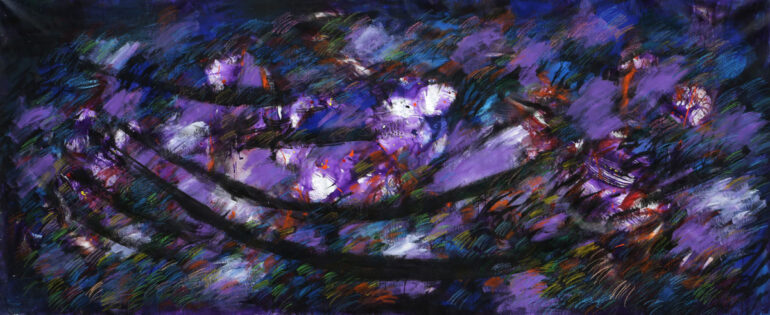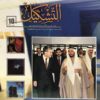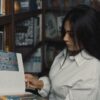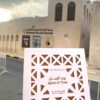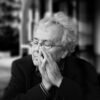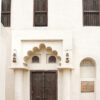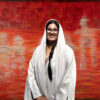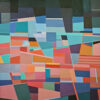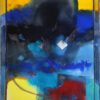“Art is the only way to present myself, my history, and my civilization to the family and society. I wish I had adduced something.”
Abdulrahim Salem is a pioneering Emirati artist who has had a pivotal role in molding the art scene not only in the United Arab Emirates but also beyond its borders. As a founding member of the Emirates Fine Arts Society, he held the position of Chairman of the Board of Directors for several terms in Sharjah. Salem, along with the late Hassan Sharif and Hussein Sharif, established “Al Tashkeel” magazine in 1984. Pursuing his passion for art, Salem was among the first artists to travel to Cairo in the 1970s and graduated with a bachelor’s degree in sculpture from the Faculty of Fine Arts at Cairo University in 1981. Upon returning to his homeland, he taught art in a government school in the Emirates. Salem’s influence extends to the local and Arab art spheres, and he also played a significant role in publishing a series of art books for children commissioned by the Ministry of Education. Furthermore, he played a role in developing the initial academic curriculum for teaching art in schools.
At EFAS’s main location and other venues, Salem provided numerous technical training sessions, imparting knowledge and skills to the younger generation in the field of arts. His creative pieces reflect his interest in cultural heritage, identity and entail themes of Sufism, folk tales, magic, and traditional customs. Salem is a zealous artist who dedicates most of his time to producing his artwork. Due to the extensive amount of his artistic output, he has been quoted saying that he “draws faster than he speaks.” In the early days, Salem relied primarily on pencil, pastel, and charcoal, and was known for his collage technique and use of black and white colors to create abstract works that were both expressive and imbued with movement and ambiguity. Although he later transitioned to using acrylics, he remained devoted to the embodiment of his work, which he likened to oxygen: “Like oxygen for me.”
In his gestural paintings, the artist frequently employs intersecting shapes and lines to emphasize the contrast between light and shadow, as well as black and white. While his works reflect his cultural origins, he strives to convey universal themes by utilizing specific visual cues.(1)
Art’s Intersection with Society
Abdulrahim Salem, an artist, is driven by his passion for women’s rights and society, placing a firm emphasis on presenting the humane side of the Emirati people. He skillfully employs heritage and cultural legacy in his art, utilizing folklore to highlight the authentic customs of Emirati society. Salem expertly weaves folk tales and myths based on the collective memory and cumulative symbols and knowledge. His art is a reflection of the imagination and creativity that embodies the Emirati society.
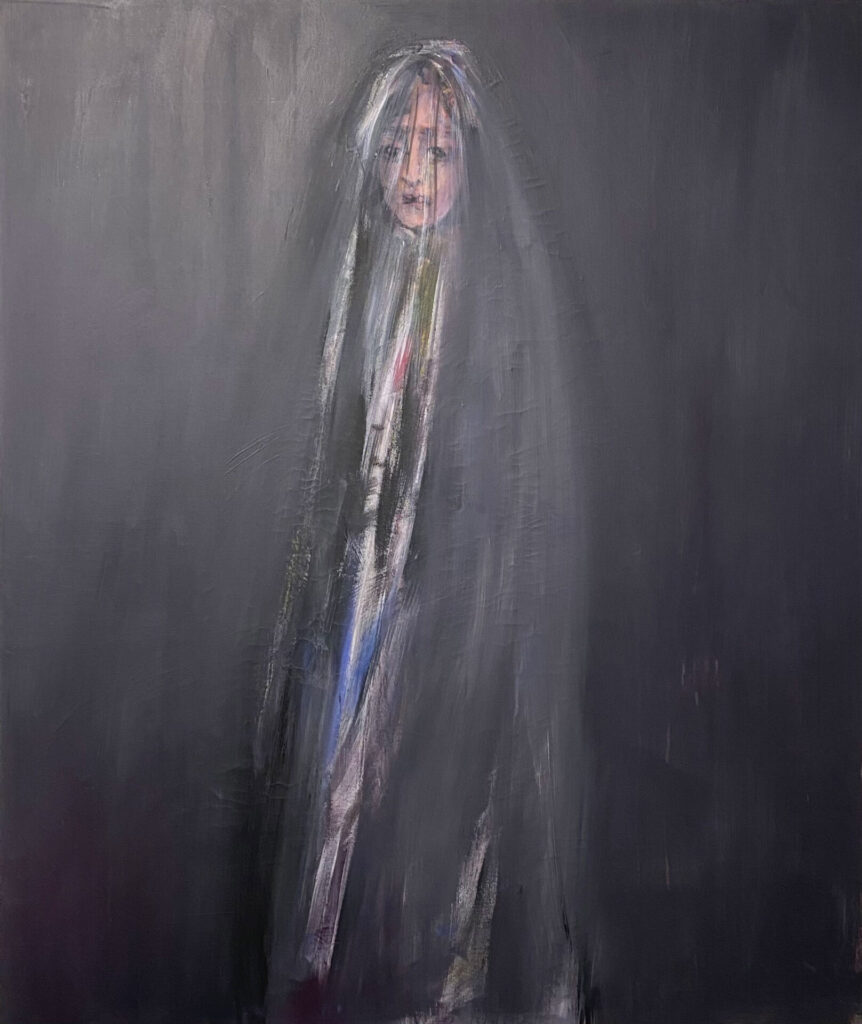

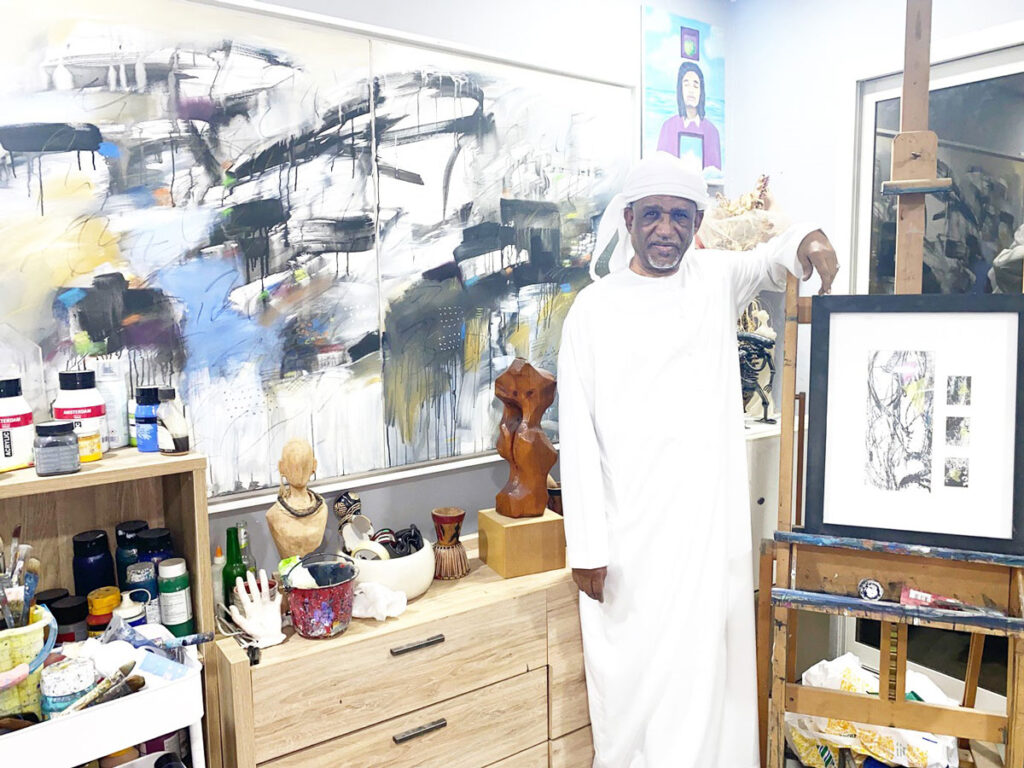
Abdulrahim Salem’s artistic works frequently embody the character of “Muhaira,” who he used to challenge societal stereotypes about women. Muhaira, as portrayed in Salem’s works, is a symbol of freedom, strength, and independence. In fact, Salem was often referred to as “Asheq Muhaira” (Muhaira lover) due to the prevalence of this legendary woman in his art and his continuous exploration of her evolution. Muhaira served as a witness to Salem’s thoughts, concerns, childhood, and stories, becoming an essential part of his artistic expression. Although Salem was highly skilled in sculpture and open to various forms of modern & contemporary art, he found that painting was the best medium to convey his artistic and intellectual perspectives. Despite his engagement with conceptual experiments and installations, Salem always returned to painting, which he believed was the most effective way to embody his artistic vision.
Genuineness in drawing inspiration from folklore
Bursting with diversity, antiquity, Emirati folklore is an amalgamation of the culture and arts of multiple civilizations transmitted from Persia, African countries, and India, more generally fused with Emirati society and Gulf culture. Despite the diverse tastes of the people of the UAE, Emirati folklore functions as a link between human concerns, whether their art stems from subsistence or aesthetic needs.
Myths and folktales are among the most important phenomena in human culture and a source of inspiration for artists. Abdulrahim Salem recognized early on the value of folktales and the importance of establishing connections between his artwork and folklore. For many years he has sought out material on mythology, folktales and magic in order to creatively combine them with art. He said: “Folk art is like a living record, which writes down the summary of each stage and experience of a person’s life.”
Salem points out that the aim of drawing inspiration from folklore in contemporary works of art is to inform the new Emirati generation about an era in which their ancestors were role-models in terms of steadfastness and challenging difficulties, not to mention the social significance of the folktale and its rich and diverse functions in the recipients’ lives. Folk literature is rich in the deep experiences it expresses- hopes, aspirations, fears, and concerns. It also comprises symbolic dimensions pertaining to human experiences and causes, and it maintains introducing virtual characters who are often characterized by courage and wisdom.
Exploring the dimensions of creative expression by drawing inspiration from folklore
The pearl diving community, an integral part of the past, continues to influence the present. This unique time period has left an indelible mark on the collective memory, conscience, and creativity of the people. Abdulrahim Salem, drew inspiration from the deep sea, pearl diving, and the traditional ‘Al-Nahma’ art to explore the human connection with the ocean. His performance art show was a highlight of the Sharjah Biennial 15, held in Kalba. The accompanying folk-art band promoted team spirit and celebrated heritage aesthetics, presenting a contemporary and unparalleled image of heritage inspiration. While some may view heritage as a mere reflection of the past, Abdulrahim Salem’s innovative approach proves that it can be a source of inspiration for the present and the future. Upon closer examination, it becomes apparent that although the characters and events revolve around the sea and diving, the chants are a reflection of contemporary living conditions.
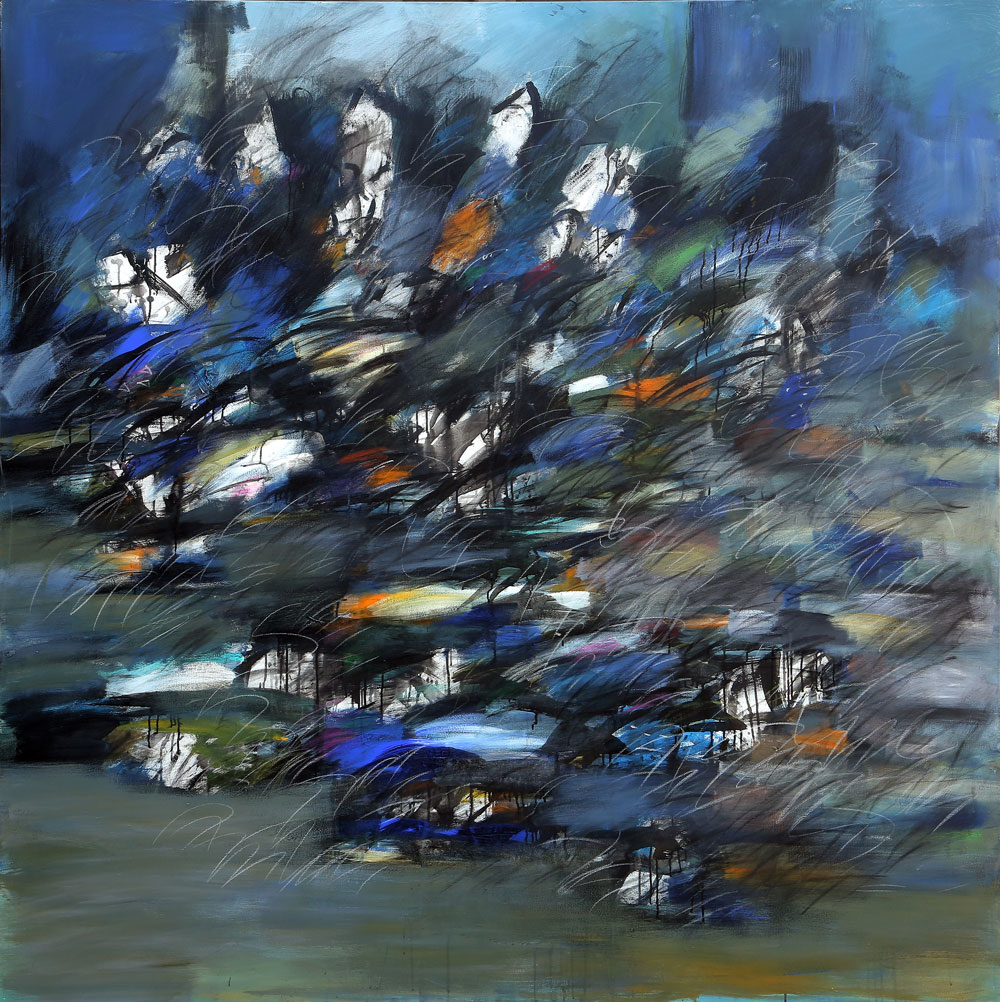
The struggles, challenges, and unpredictability of human existence today are no different from those of sailors from earlier times. With the same battles against fate and the unknown, the similarities are striking.

The unknown sailor and the Al Nahma Art
Salem’s captivating performance art show, “The Unknown Sailor,” paid homage to Emirati sea chants, folklore, traditions, and marine arts. An accompanying folk band sang Al Nahma, a form of art dedicated to the sea and sailors, while Al-Nahham, the ship’s singer, belted out songs, ditties, and chants to encourage fishermen to work hard and catch an abundance of fish. The performance also expressed the longing of sailors and divers for their families and wives. Salem’s art and movements echo the plight of divers during the diving season, as the band serenades them with the traditional Yamal chants. This lyrical expression, steeped in the history of fishing and diving in the Arabian Gulf, embodies the essence of camaraderie and intimacy among sailors. Furthermore, Yamal is instrumental in regulating the rhythm of the paddle movement during sailing. Salem draws inspiration from his artwork, having replaced fishing nets with Canvas, the boat deck with the ice factory yard in Kalba, and the sailors with a folk band:
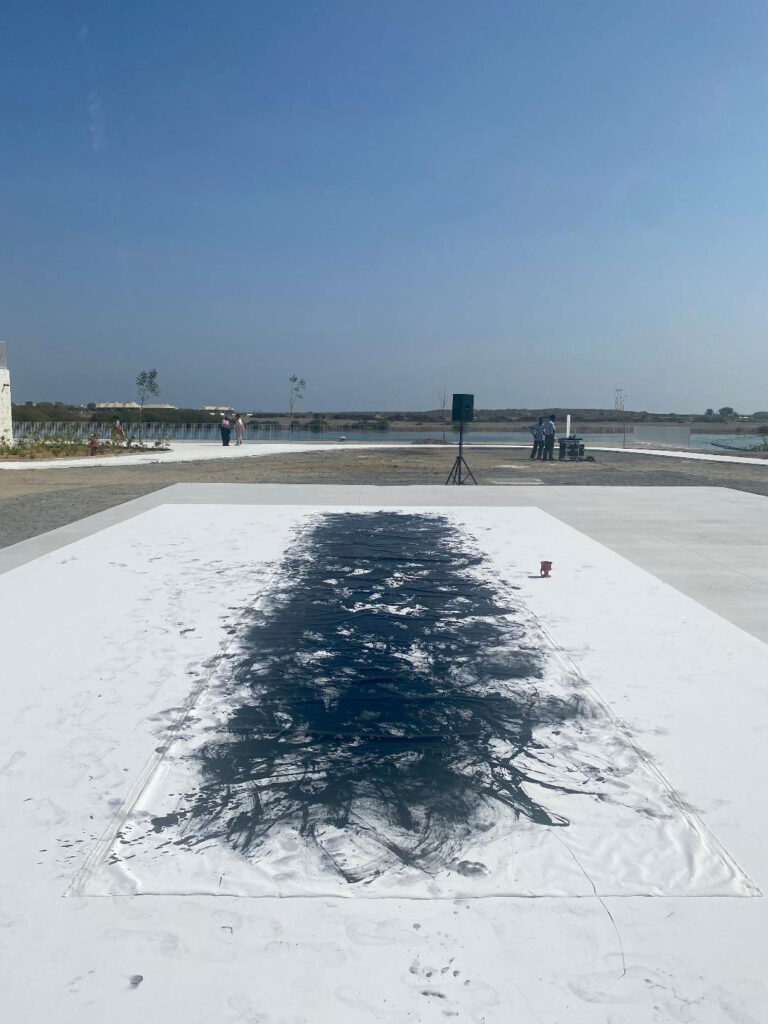
“Oh Yamal… oh, Yamal… oh, Yamal… Abboud… Abboud…”
In his artistic creations, Abdulrahim Salem blends the past with the present and merges heritage with contemporary elements. His work is infused with incense, dance, and traditional AlNahma Art, creating an atmosphere that celebrates cultural legacy and “Thinking Historically in the presence”
in which the Biennial’s motto in its current session is manifested.

1. “Sharjah Biennial 15: The History in the Present,” Biennial Guide, Sharjah Art Foundation, 2023.
Dr. Noha Farran is the Founder & CEO of ‘Thinking Art’ Foundation’, Historian, Professor, Cultural Strategist, Researcher, Curator, Visual Artist & Chief Editor of Al Tashkeel magazine. Holding a Ph.D. with excellence in the 'Art & Science of Arts', an MFA in Fine Arts, and an MA in the philosophy of art, she has authored numerous published books and research papers documenting art in the Arab World.

